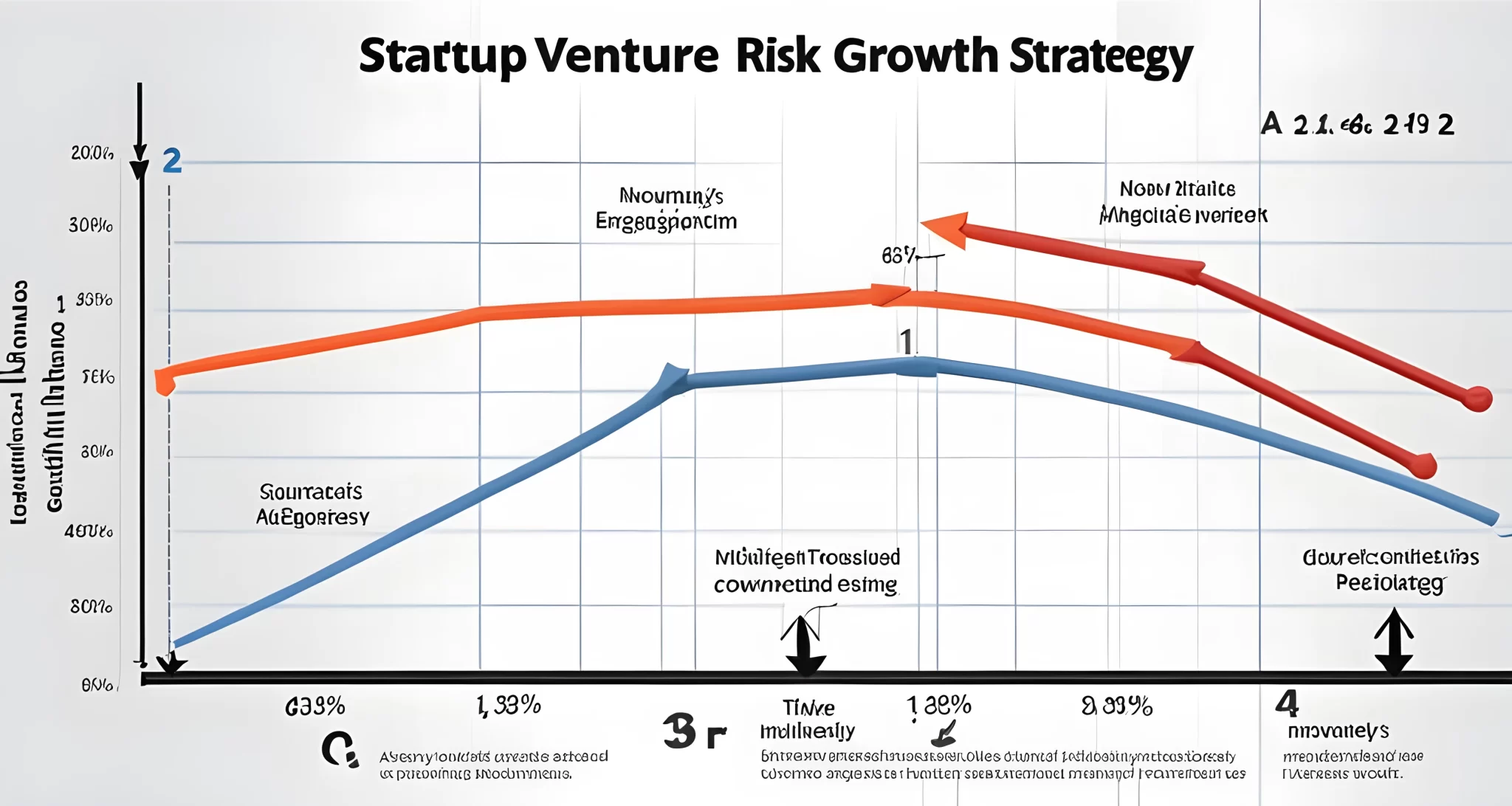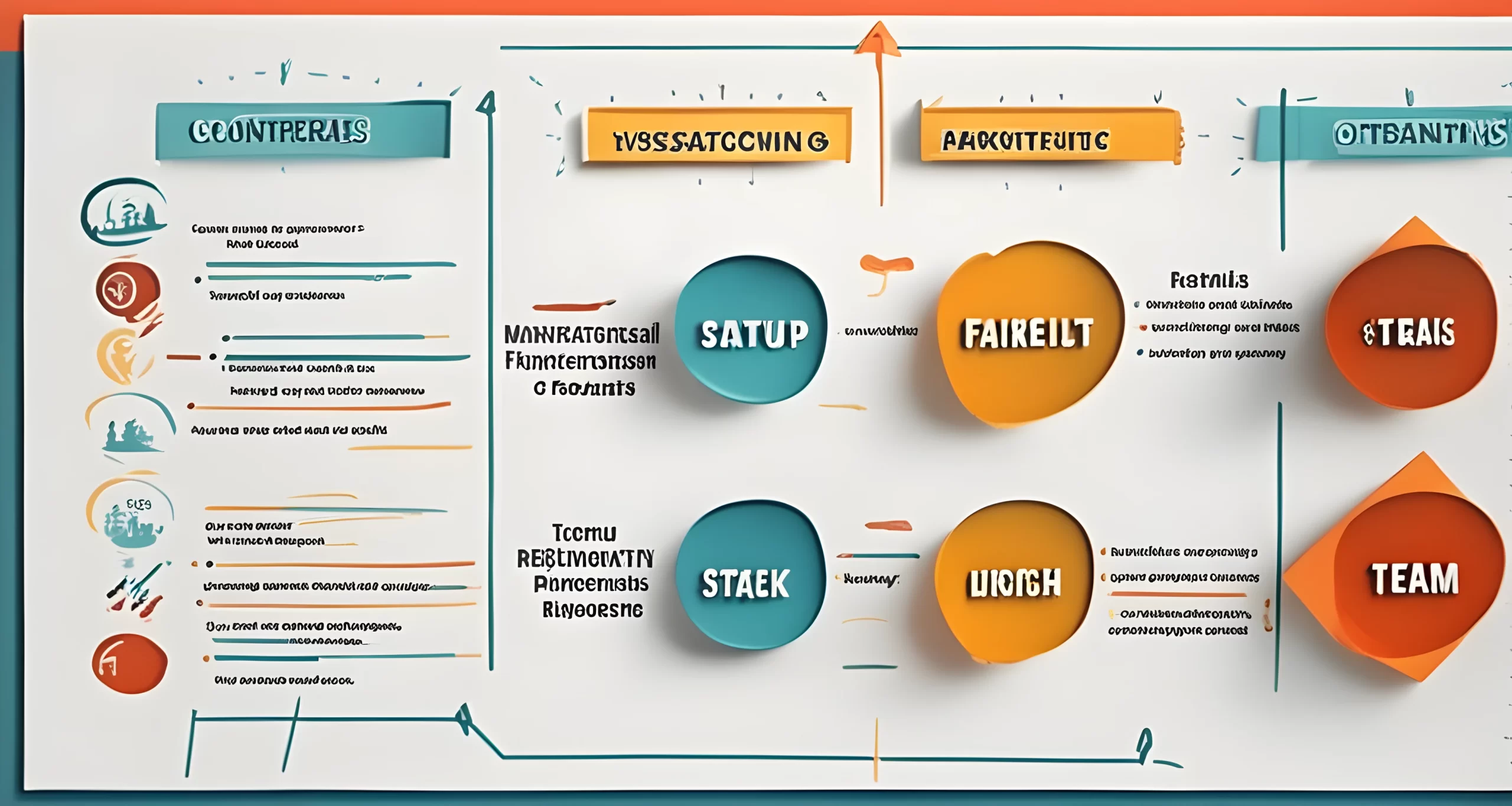Cash Flow Management
In the early stages of a startup’s growth, cash flow is a significant risk due to limited resources. Careful financial planning, budgeting, and having a clear financial forecast are essential to manage this risk.
Startups need to ensure that they have enough cash to cover their expenses and avoid cash flow shortages that can hinder operations and growth. Monitoring and managing cash flow effectively can help startups navigate through the challenges of limited resources and maximize financial stability.
One important aspect of cash flow management is to handle new business capital issues. This can involve securing funding through external sources such as investors, loans, or grants. Additionally, startups can explore strategies such as bootstrapping, revenue-based financing, or crowdfunding to maintain a healthy cash flow.
Implementing effective financial risk management strategies is crucial for startups to mitigate the potential risks associated with cash flow. By conducting in-depth market research and analysis, startups can gain insights into customer behavior, industry trends, and competitive landscapes. This information can then be used to make informed decisions regarding pricing strategies, sales forecasting, and expense management.
Furthermore, technology risk assessment plays a vital role in cash flow management. Startups need to evaluate their reliance on specific technologies and assess the potential impact of any technological failures or disruptions on their cash flow. Investing in robust IT infrastructure and implementing contingency plans can help mitigate these risks.
In conclusion, managing cash flow is paramount for startup ventures. By proactively addressing cash flow challenges through careful planning, strategic financial decisions, and proactive risk management, startups can enhance their financial stability and lay a strong foundation for sustainable growth.

Growth Strategy Risks
One of the key challenges for startups is managing their growth strategy effectively. There are several risks that startups need to consider when developing their growth strategy in order to ensure sustainable and successful growth.
Balancing Growth
One of the major risks for startups is growing too quickly or too slowly. Rapid growth can lead to financial instability, while slow growth may result in missed opportunities. It is crucial for startups to strike a balance between their growth and market demand. They need to carefully analyze their growth strategy and consider factors such as scalability, customer acquisition, and resource allocation. A well-defined growth strategy that aligns with market demand can help startups achieve sustainable growth while minimizing potential risks.
Staffing Needs
Another risk associated with growth strategy is staffing needs. As a startup grows, it needs to ensure that it has the right talent in place to support its expansion. Hiring too many employees too quickly can strain the company’s cash flow, while not hiring enough can hamper the startup’s ability to take advantage of growth opportunities. Startups must carefully assess their staffing needs and plan accordingly to avoid any detrimental impact on their growth.
Market Demand
Understanding market demand is essential for startups when developing their growth strategy. Failing to accurately gauge market demand can result in overinvestment in products or services that do not have sufficient demand, leading to financial risk. On the other hand, underestimating market demand can result in missed opportunities for growth. Startups need to conduct thorough market research and analysis to ensure that their growth strategy aligns with market demand.
In conclusion, managing the risks associated with a startup’s growth strategy is crucial for its success. By carefully balancing growth, staffing needs, and market demand, startups can develop a sustainable and effective growth strategy that supports their long-term success.
For further insights on addressing the challenges of building a startup portfolio, read Startup Portfolio Building Roadblocks Cleared.

Market Research and Analysis
Market risk is a critical factor for startups, and it involves assessing the target market’s size, competition, and saturation. Thorough market research and analysis are essential to mitigate this risk. By benchmarking against competitors and validating product-market fit, startups can make informed decisions about product development, pricing, and market entry strategies.
Importance of Market Research
Startups need to understand their target market and competition to tailor their strategies accordingly. This involves conducting comprehensive market research and analysis to identify opportunities and threats in the market Startup stability and uncertainty. Understanding the market landscape allows startups to identify niche areas where they can differentiate themselves from competitors.
Mitigating Market Risk
Validating product-market fit through market research helps startups ensure that there is a demand for their product or service. By understanding customer needs and preferences, startups can tailor their offerings to meet market demands effectively.
Tailoring Strategies
Market research also helps startups identify the most effective marketing and distribution channels for reaching their target audience. This information is crucial for developing successful market entry strategies.
Identifying Opportunities and Threats
Comprehensive market research and analysis allow startups to identify both opportunities and threats in the market. By understanding the competitive landscape, startups can adjust their strategies to capitalize on opportunities while mitigating potential threats.
In conclusion, thorough market research and analysis are necessary for startups to mitigate market risk. Understanding the target market and competition allows startups to make informed decisions about product development, pricing, and market entry strategies. By conducting comprehensive market research, startups can identify opportunities and threats in the market and tailor their strategies accordingly.

Financial Risk Management
Financial risk management is a crucial aspect of ensuring the success and sustainability of startup ventures. Startups often face challenges in managing their financial resources and maintaining profitability, making it essential to prioritize financial risk assessment and monitoring.
Importance of Financial Risk Management
Poor financial performance can significantly impact a startup’s growth and success. By analyzing financial statements, projections, and assumptions, startups can identify potential risks and take preemptive measures to mitigate them. It is also important for startups to evaluate their funding history, sources, and terms to effectively manage financial risk.
Implementing a Sound Financial Risk Management Approach
To safeguard against financial crises, startups need to actively monitor their financial performance and make informed decisions based on the assessment of potential risks. A sound financial risk management approach can help startups position themselves for sustainable growth and success.
Linking Financial Risk Management to Overall Business Strategy
Financial risk management should be integrated into a startup’s overall business strategy. By addressing financial risks proactively, startups can ensure that they are well-equipped to handle challenges and capitalize on opportunities. This approach can help startups build resilience and stability in their operations.
In conclusion, startups must prioritize financial risk management to navigate the complexities of managing their finances effectively. By implementing a comprehensive approach to financial risk assessment and monitoring, startups can position themselves for long-term success Business risk assessment techniques.

Technology Risk Assessment
Startups face a multitude of risks, including those related to technology. It is crucial for startups to carefully manage technology risks in order to protect their intellectual property, ensure product quality, and stay competitive in the market.
Evaluating Technological Capabilities
One of the first steps in managing technology risk is for startups to thoroughly evaluate their technological capabilities. This includes assessing the infrastructure, product performance, and innovation pipeline. By understanding their current technological landscape, startups can identify potential areas of weakness and develop strategies for improvement.
Identifying Potential Risks
Once a startup has a clear understanding of its technological capabilities, it is important to identify potential risks in technology deployment. This could include issues related to cybersecurity, data privacy, or system malfunctions. By anticipating these risks, startups can proactively put measures in place to mitigate them.
Planning for Innovation and Product Development
In addition to managing existing technological risks, startups must also plan for innovation and product development. This involves creating a roadmap for future technological advancements and ensuring that the necessary resources are in place to support these initiatives. By having a clear plan in place, startups can minimize the risk of falling behind in terms of technological innovation.
Implementing Robust Technology Risk Assessment Measures
In order to effectively manage technology risks, startups should implement robust technology risk assessment measures. This could involve regular security audits, performance testing, and ongoing evaluation of the innovation pipeline. By continuously monitoring and addressing potential technology risks, startups can safeguard their operations against unforeseen technological challenges.
In conclusion, technology risk assessment is a critical component of managing risk in startup ventures. By carefully evaluating technological capabilities, identifying potential risks, planning for innovation and product development, and implementing robust risk assessment measures, startups can protect their intellectual property, ensure product quality, and maintain a competitive edge in the market.
For more information on start-up planning and venture capital, check out Planning for start-up venture.
FAQ
What are the main risks faced by startup ventures?
Startups face various risks, including financial uncertainties, legal liabilities, technology issues, strategic management errors, accidents, and natural disasters.
How can startups manage cash flow risks?
In the early stages of a startup’s growth, careful financial planning, budgeting, and having a clear financial forecast are essential to manage cash flow risks.
What is market risk and how can it be mitigated?
Market risk involves assessing the target market’s size, competition, and saturation. thorough market research, analysis, and validating product-market fit are necessary to mitigate market risk.
Why is financial risk management essential for startups?
Financial risk management is essential for startups, as poor financial performance can derail growth and profitability. analyzing financial statements, projections, and assumptions can help manage financial risk.
